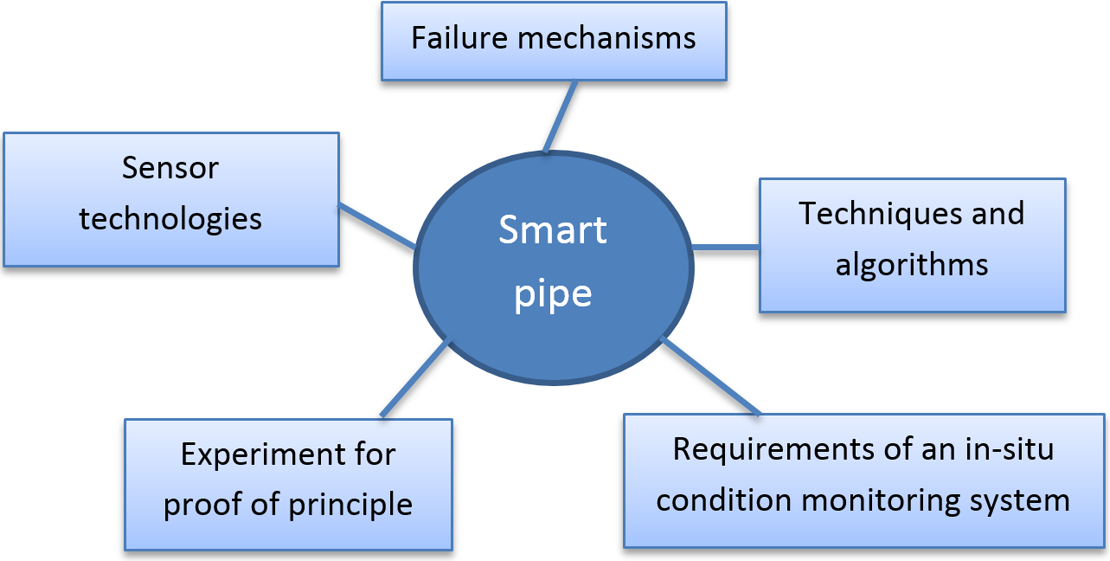Duration
Start: 01-04-2016
End: 01-04-2020
Partners & Funding:
Dynamics Based Maintenance group, University of Twente
Pervasive System research group, University of Twente
Wetsus – European centre of excellence for sustainable water technology
This project has received funding from the European Union's Horizon 2020 research and innovation programme under the Marie Skfodowska-Curie grant agreement No 665874
Project website
N.A.
Staff
Mithun Chowdhury, Doekle Yntema, Nirvana Meratnia, Richard Loendersloot, Paul Havinga, Tiedo Tinga
Description
Motivation
During the service life of a water supply network, it is subjected to various loading and therefore several factors may induce failure in the network. Assets like pipes and joints are mostly buried and their failure mechanisms are associated with material properties, environmental conditions, and internal and external loads.
The current inspection of water supply network includes the use of smart ball, pigs, ground penetrating radar, etc. Most of these techniques rely on personnel going out into the field and investigate a small section of the network, which is labour intensive and time-consuming. Sometimes pipelines are replaced in combination with other ground works or only based on their age, which may result in the replacement of many pipes with a substantial remaining life. By employing sensor technology for newly installed assets of water supply network, the above-mentioned problems can be avoided and we call that smart-pipe.
The advantage of the smart-pipe is that integration of sensor technology will provide information on potential threats and improve the safety of water supply network. It will be possible to properly plan the replacement and repair in advance, and detect problems such as pipe breakage, hence avoid both failure and premature replacement, leading to a significant reduction of the operational costs.
Research question and Approach
The main research question of the project is: How to develop an in-situ asset condition monitoring system relying on sensor technologies that can provide information about failure probability, load history, and current operational status?

Fig. Project approach
Research objectives
- Understand failure mechanisms of assets that lead to failure of water supply network
- Find out the features associated with different failure modes
- Investigate different sensor technologies for feature detection
- Investigate different techniques and develop algorithms for detecting changes in the condition that influence the quality of the water supply assets
- Identify how to apply methods in small processing unit consist of the sensor(s), microcontroller and transceiver
